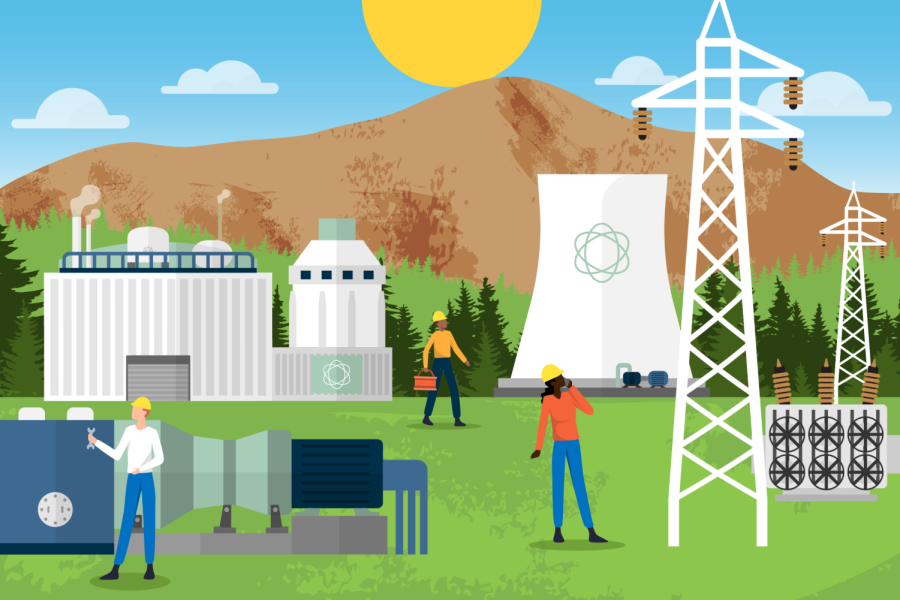Scientists complete nuclear fusion
December 22, 2022
On December 5, 2022, scientists at the Lawrence Livermore National Laboratory were able to successfully complete nuclear fusion. Nuclear fusion happens when two light atoms fuse and create a heavier atom while also creating a massive amount of energy. This energy is cleaner, usually cheaper, and most importantly, carbon-free. It is also the energy that powers our sun and our stars.
This is extremely promising in the fight against our Earth’s climate crisis. Almost all energy that we use is made from displacing carbon, typically by burning fossil fuels. This displacement creates a negative impact on the environment by relocating where carbon dioxide should be. When we burn fossil fuels, we add lots of carbon dioxide into the atmosphere, which traps heat and causes global warming. It also can be absorbed by the ocean and cause the ocean to become more acidic as carbon dioxide reacts with water to create Carbonic Acid. Nuclear fusion is able to combat this by creating more energy than it takes to cause the reaction while also not using carbon.
This isn’t the first time we’ve attempted to use nuclear energy to create carbon-free energy either. Nuclear fission is used in nuclear power plants, and while it can make a lot of energy at once, it creates a lot of radioactive waste, which can damage organisms’ DNA.
However, nuclear fusion is able to combine atoms to create energy without many harmful byproducts. It also is stronger than nuclear fission and doesn’t include a chain reaction sequence to start, which makes it safer than nuclear fission as well. When successful, there was a 2:3 ratio, where it took 2 megajoules to run, and it created 3 megajoules.
While nuclear fusion is a huge breakthrough in combating our current climate crisis, actually implementing this into our daily lives could take decades.
This isn’t a new trend either. Many scientific breakthroughs can be advertised as a new fix, even if they’ll take decades to actually implement. The term Greenwashing has been coined as a way to describe how much of the “greener” movement is slightly misleading. Whether it be by how a product is advertised or how an article is written, greenwashing often makes promises that aren’t true. If a new product is introduced, like biodegradable algae bags that can replace plastic usage, it may be advertised as the “new solution.” However, the actual implementation for these products often isn’t used for years. It doesn’t just stop at scientific breakthroughs though. Even things like Keurig cups, which were marketed to the public as recyclable even though they weren’t, perform greenwashing tactics to make their product seem better.
”I think greenwashing is horrible,” senior Zoë Harris said. “Corporations that convert consumers’ genuine concerns about the environment into profit are predatory and deceitful. Companies use greenwashing to pacify people and manipulate their consumers into accepting less action than they deserve.”
The best way to fight this issue is for corporations to be held accountable for taking advantage of consumers and to properly research products that label themselves as “greener” alternatives.
“Retailers should also offer areas in stores that are certified to be environmentally friendly rather than be fully complicit with greenwashing,” Harris said.
There’s no singular “perfect” solution to tackle our current climate crisis, but finding cleaner alternatives for our current practices could be very helpful in strengthening the fight. However, acting like these alternatives are universally obtainable is extremely misleading. Not only are greener alternatives more expensive, but they can be incorrectly marketed as “greener alternatives” or treated as if they are easily implementable. In general, it’s always important to do research into any product(s) that you’d want to buy, especially if you want to hold yourself to a greener standard.



